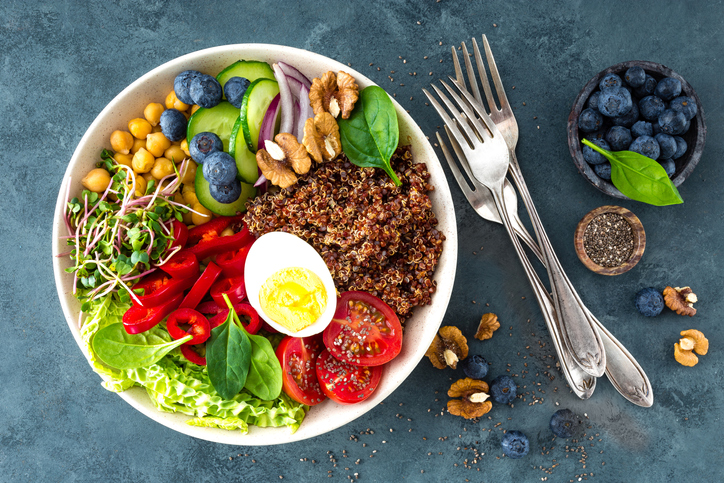 |
Encouraging—and improving access to—healthful diets for your patients can mitigate their risks for several ocular diseases. Photo: Getty Images. |
Low income and race or ethnicity are two of the many factors that are associated with food insecurity in adults, but a recent study in people age 50 and older shows that vision impairment (VI) is also associated with food insecurity, as assessed by both self-reported VI (SRVI) and objective presenting VI (PVI). The team noted that those with food insecurity also had higher odds of prevalent VI.
“Compared with those with full food security, those with very low food security had 170% higher odds of PVI and 85% higher odds of SRVI. Furthermore, as severity of food insecurity increased, participants were increasingly likely to experience VI in a dose-response pattern,” the authors concluded in their study. “Those with low and very low food security had VA that was 0.02 logMAR to 0.06 logMAR worse than those with full food security.”
The authors noted several possible reasons, including how food insecurity leads to poor diet, which has been associated with diabetic retinopathy, cataract and age-related macular degeneration—all causes of poor vision—and how it’s also a risk factor for hypertension and diabetes, which are other causes of poor vision.
“Third, it is possible that food insecurity could be a surrogate for limited healthcare access (i.e., confounding), which could lead to uncontrolled progression of eye disease, lack of access to refractive correction, etc. Fourth, poor diet and chronic stress (both of which are consequences of food insecurity) can each affect nerve and vascular function, which could theoretically affect visual function,” the authors explained.
Recent studies have shown that it’s possible older adults may have had more total years to accumulate deleterious effects of food insecurity. Because of this, the investigators hypothesized that adults 65 years and older have a greater magnitude of association between food insecurity and poor vision compared with those aged 50 to 64 years.
“In fact, we found that [compared with full food security], very low food insecurity was associated with 113% higher odds of PVI in those aged 50 to 64 years but was associated with a 202% higher odds of PVI in those 65 years and older,” the authors noted.
They added that further data is needed to characterize the cumulative exposure to food insecurity each participant experienced.
Kolli A, Mozaffarian RS, Kenney EL. Food insecurity and vision impairment among adults age 50 and older in the United States. Am J Ophthalmol. October 5, 2021. [Epub ahead of print]. |


